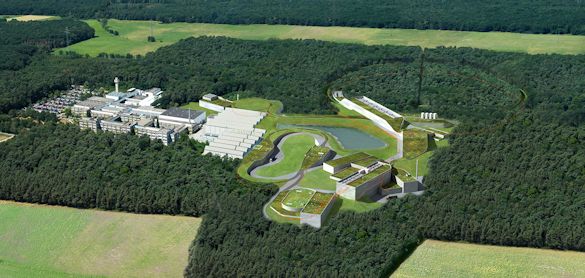University of Liverpool Physicists are part of an international project that is one step closer to being able to read the inside of stars and discover new elements that exist for only a trillionth of a trillionth of a second inside exploding supernovae.
The R3B project has taken the latest step towards the development of a detector that will reveal missing information about extreme states of matter, with the successful commissioning of one its first silicon detector modules.
R3B is developing a ground breaking detector system that will provide key technology for NuSTAR (Nuclear Structure, Astrophysics and Reactions), one of the four main international experiments planned for FAIR (Facility for Antiproton and Ion Research) in Germany which, when completed, will be the most advanced nuclear physics research facility in the world.
Dr Marielle Chartier, leader of the R3B project from the University of Liverpool’s Department of Physics, said: “The successful commissioning of one of the first Silicon detector modules in an “in-beam” test at the accelerator facility at GSI, Germany, was a key milestone for the project. This was a tremendous effort by the whole team. The R3B spectrometer can now be realised and this project and others within NuSTAR will allow the UK to be involved in a whole range of ground breaking physics experiments etc.”
The Science and Technology Facilities Council’s (STFC) physicist Roy Lemmon said: “Nobody knows exactly how many elements are out there waiting to be discovered, or how they are created, but we will be able to study new nuclei that have never been seen before, and find answers to information that is still missing about extreme states of matter in the Universe.
“The advances in technology that will result from the work on R3B make it a very exciting time to be involved in this area of research. Through R3B and NuSTAR we will be able to address a very broad spectrum of science that will answer some really fundamental questions”
At FAIR, NuSTAR will create extraordinarily rare nuclear species that only exist momentarily within exploding stars such as supernovae. R3B will be made up of a series of highly complex sub-detectors and, for its part, the UK team has developed a state-of-the-art silicon tracker that will be capable of exploiting these high intensity beams at NuSTAR, allowing researchers to study the properties of these rare nuclear species that do not occur naturally on earth.
Professor John Simpson, Head of STFC’s Nuclear Physics Group, added: “FAIR will be the world’s most important nuclear physics research facility for many years to come creating an opportunity for UK nuclear physics scientists to work at the cutting edge in the development of new and innovative applications, such as in brand new techniques for medical imaging and radiation monitoring. The UK will benefit enormously as a result of these international research programmes and there will be built-in opportunities to contribute to and profit from new technologies.”
Nuclear physics research is already responsible for a host of world changing applications across many areas of our lives, such as providing the technology behind scanners in hospitals, in the early detection of brain tumours and cancer therapy, as well as in anti-terrorism security applications.
